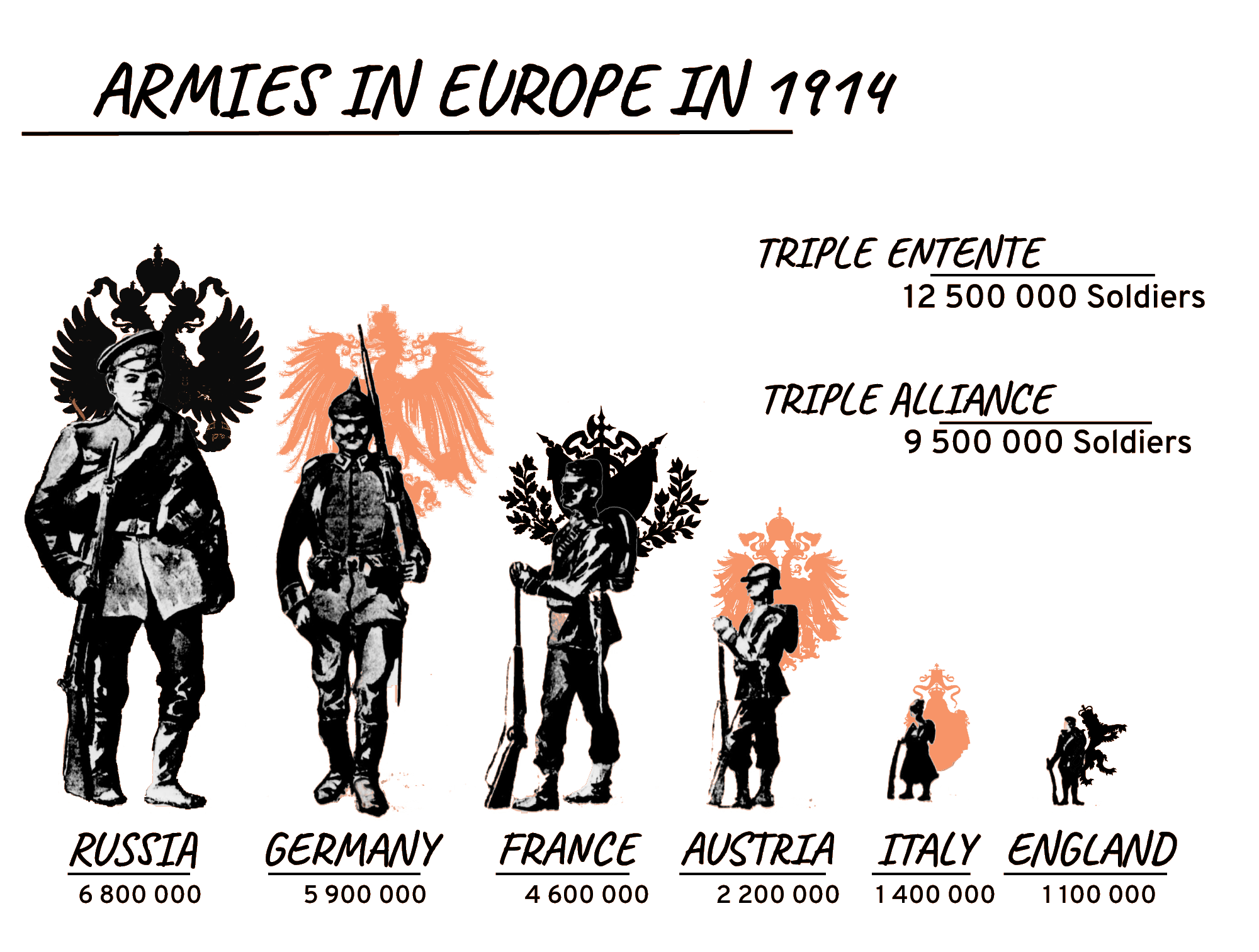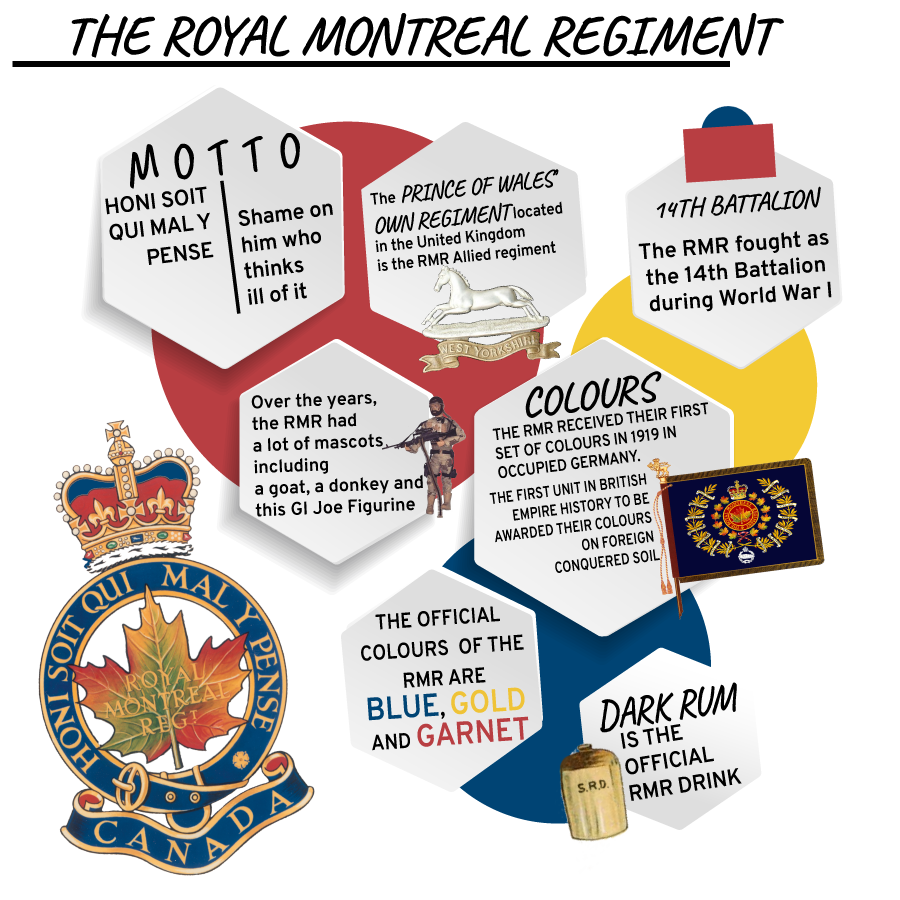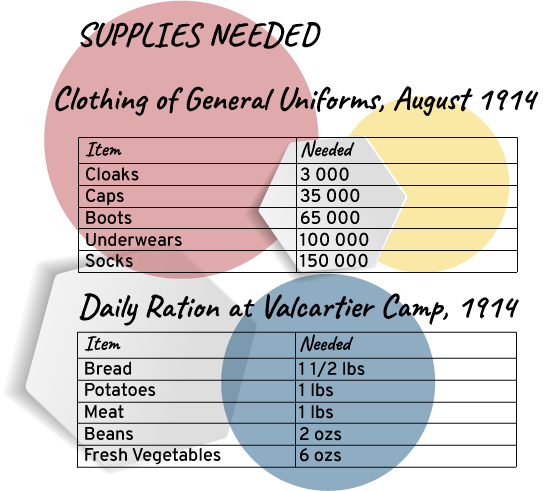Life in Canada, Preparing for War

At the outbreak of war in 1914, no one expected this conflict to take on such incredible proportions. In the years preceding the Great War, the mightiest countries of Europe forged strong alliances with one another in order to maintain the balance of power on the continent. Because of those alliances, when the Austro-Hungarian Empire declared war on Serbia, many countries were bound by treaty to join the conflict. Russia’s alliance to the Serbian power forced the country to side against the Austro-Hungarian Empire. Germany and the Austro-Hungarian Empire had strong ties and they also sided together. Like a domino effect, almost all European countries were pulled into the conflict.
Of course, many European countries were major colonial powers at the time. Their involvement in the conflict also meant that their colonies were automatically at war as well. For this reason, the Great War brought people from all continents together to fight mainly in Europe, but also in Africa and the Middle-East. Not only was the Great War a global conflict on a geographical level, its scale and duration soon led it to become a global conflict within all spheres of society. The entire world economy shifted to accommodate the war effort. Everyone was somewhat involved in the conflict, from children targeted by propaganda and being told to convince their fathers to join the army, to women entering the workforce in great numbers, to minority groups enlisting with the hopes of gaining a better treatment after the war.

A Numbers Game?
During the 19th century leading up to the First World War, European countries spent considerable resources maintaining an army even in times of peace. Each country had to make sure they would be ready as quickly as possible in case they were attacked. However, the extent to which they prepared for an eventual conflict varied widely.
For example, in absolute numbers of manpower, the Russian Empire had the largest army in 1914. Yet, when we compare the number of soldiers to the total Russian population, we realize that only 0.4% of the population was actually trained to participate in the war. In reality, the Russian Empire had the smallest per capita enlistment rate of all the countries listed above. In contrast, France had the largest at 11%.
WWI Background

Many European empires lost their colonies in the Americas during the 1700s and 1800s, yet the Middle East, Africa and Asia were still sought after territories. Decades of imperial rivalries, economic competition, nationalism, and instability following the collapse of the Ottoman Empire in the east all led to the fragility upon which Europe stood at the turn of the 20th century.
The Archduke Franz Ferdinand, who was to become the future King of Austria-Hungary, was assassinated on June 28, 1914 in Sarajevo, Bosnia by a Serbian nationalist (part of an extremist group that wanted Serbian power in the Balkans with the intention of breaking up the Austro-Hungarian Empire). Austria-Hungary believed the Serbian government was involved in the murder and declared war. This declaration of war was supported by Germany, an ally of Austria-Hungary.
Russia quickly became involved as it sought to protect Slavic nations (which included Serbians). Germany then demanded a promise of peace from Russia and France, yet with no reply declared war on Russia on August 1, 1914. Germany declared war on France, a Russian ally, on August 3, 1914.
European countries wrangled one another over international relations leading to two alliances at the start of WWI in 1914: The Triple Alliance (Germany, Austria-Hungary, the Ottoman Empire, and Italy, which later left the Alliance) and The Triple Entente (France, Russia, Great Britain).
The German army invaded Belgium, on its way to France, on August 4th, 1914. Britain, an ally of France and supporter of Belgian neutrality, demanded the Germans withdraw from Belgium and that Germany observe the Treaty of 1839 which declared Belgium a neutral country. Despite the ultimatum from the British, Britain declared war on Germany on August 5th.
Canada was a self-governing dominion of the British Empire but did not fully determine or control Canadian foreign affairs and therefore was obliged to enter the War alongside Britain., who asked for 25,000 Canadian soldiers to be deployed.
The Canadian Government thought that the might of the British Empire would make for a short-fought war with Germany. Little did they know it would last four long years and enlist 619,636 Canadians, almost 13% of Canada’s population of 8 million.
Who got involved? When?
Although the war began in Europe, it quickly spread around the world. The following is a list of countries, their alliances and the dates they entered the War:
The Triple Entente or Allies
- Serbia (28 July 1914)
- Russia (1 August 1914)
- France (2 August 1914)
- Great Britain (4 August 1914)
- British Empire Dominions and Colonies (4 August 1914):
- Australia
- India
- Canada
- Newfoundland
- New Zealand
- South Africa
- Japan (23 August 1914)
- Italy (23 May 1915)
- United States (6 April 1917)
These countries also fought with the Allies or declared war on the Central Powers:
Minor European Powers:
- Portugal
- Belgium
- Romania
- Greece
- Montenegro
Other countries:
- San Marino
- Brazil
- Costa Rica
- Cuba
- Ecuador
- Guatemala
- Haiti
- Honduras
- Nicaragua
- Panama
- Peru
- China
- Siam
- Liberia
The Central Powers:
- Austria-Hungary (28 July 1914)
- Germany (1 August 1914)
- Turkey (5 November 1914)
- Bulgaria (14 October 1915)
These were the main European countries to remain neutral throughout the war:
- The Netherlands
- Switzerland
- Spain
- Sweden
- Norway
- Denmark
- Finland
- Iceland

Would you Fight for a Dollar?
In August 1914, the daily pay rate for a private was $1.00 a day! Although, a dollar in 1914 could get you further than a loonie will today, according to the Bank of Canada inflation calculator, $1.00 would equal nearly $22 in 2018. So… would you fight for $22 a day…?
As a Private, the lowest rank within the Canadian Expeditionary Force (CEF), you could hope to be promoted as a corporal and get a raise of ten cents. (equivalent to $2.00 today), but you would be taking on a lot more responsibility. The highest ranking senior officer (below General ranks), a Colonel, would earn $6.00 (equivalent to $130 today) as their daily pay rate.
In comparison, the average daily rate for a Nursing Sister attached to the CEF was double that of a Private, earning $2.00 a day (equivalent to $43.00 today)

The Royal Montreal Regiment at the very beginning
When war broke out, many Montrealers wanted to do their part to fight the enemy and answered the call to arms with enthusiasm. To coordinate the city’s war effort, the Royal Montreal Regiment was formed in early August 1914. At that time it was called the “1st Regiment, Royal Montreal Regiment” and it was first formed by combining three existing prominent militia regiments in Montreal: The 1st Regiment, Canadian Grenadier Guards (372 men and 12 officers); The 3rd Regiment, Victoria Rifles of Canada (355 men and 12 officers), and the 65th Regiment, Carabiniers Mont-Royal (276 men and 8 officers).
Shortly thereafter, the Minister of Militia created the Canadian Expeditionary Force (CEF) so that all of the 424,000 Canadians that went to France and Belgium between 1914 and 1918 were part of the same centrally organized force. Within this military organization, The Royal Montreal Regiment was known as the 14th Battalion (RMR) CEF.
Composed of both English and French speaking men, the RMR “illustrated more than any other battalion in the 1st Canadian Division the spirit of unity between those two great races.”
Timeline
AUGUST 6: ACTIVE RECRUITING FOR RMR BEGAN
AUGUST 8: VALCARTIER (NORTH OF QUEBEC CITY) DESIGNATED AS BASE
AUGUST 18: 983 men and 32 officers departed Montreal as The RMR
AUGUST 22: THE RMR ORDERED TO VALCARTIER
A few statistics
The soldiers needed a lot of supplies, as well as food.
An estimated 256,000 horses and mules died serving in the Commonwealth armies on the Western Front.
Horses were used for logistical support since they were more reliable than vehicles, especially in the mud.
Additional resources
Multimedia material
The National Film Board of Canada’s (NFB) docu-drama about the life and experiences of famed Canadian fighter pilot Billy Bishop during WWI
https://www.nfb.ca/film/the-kid-who-couldnt-miss/
Assassination of Franz Ferdinand – cartoon – Simple History, 1:42 minutes
https://www.youtube.com/watch?v=JEGVcSpfM9k
12 minute video by Epic History introducing the beginning of the War, massive casualties and world context. July 1914-December 1914
https://www.youtube.com/watch?v=PbwH1ZBnYds
